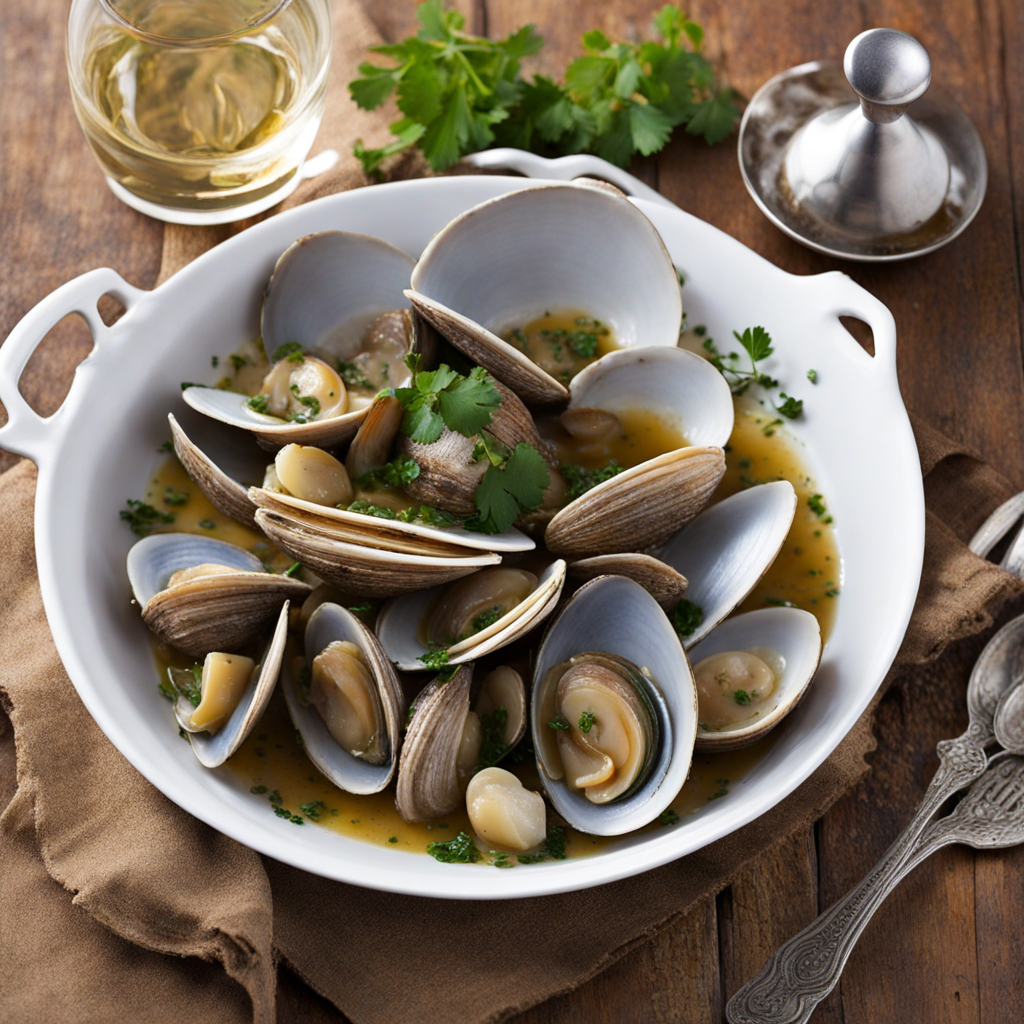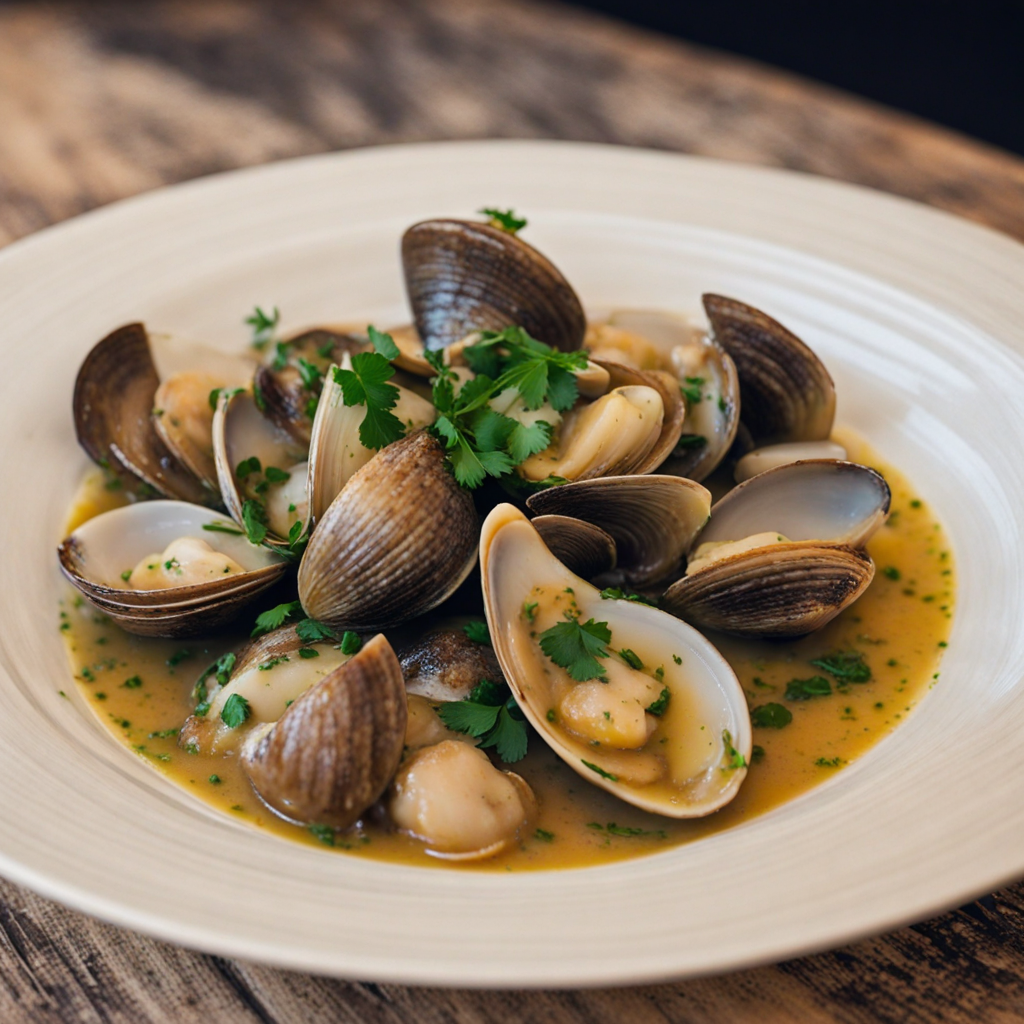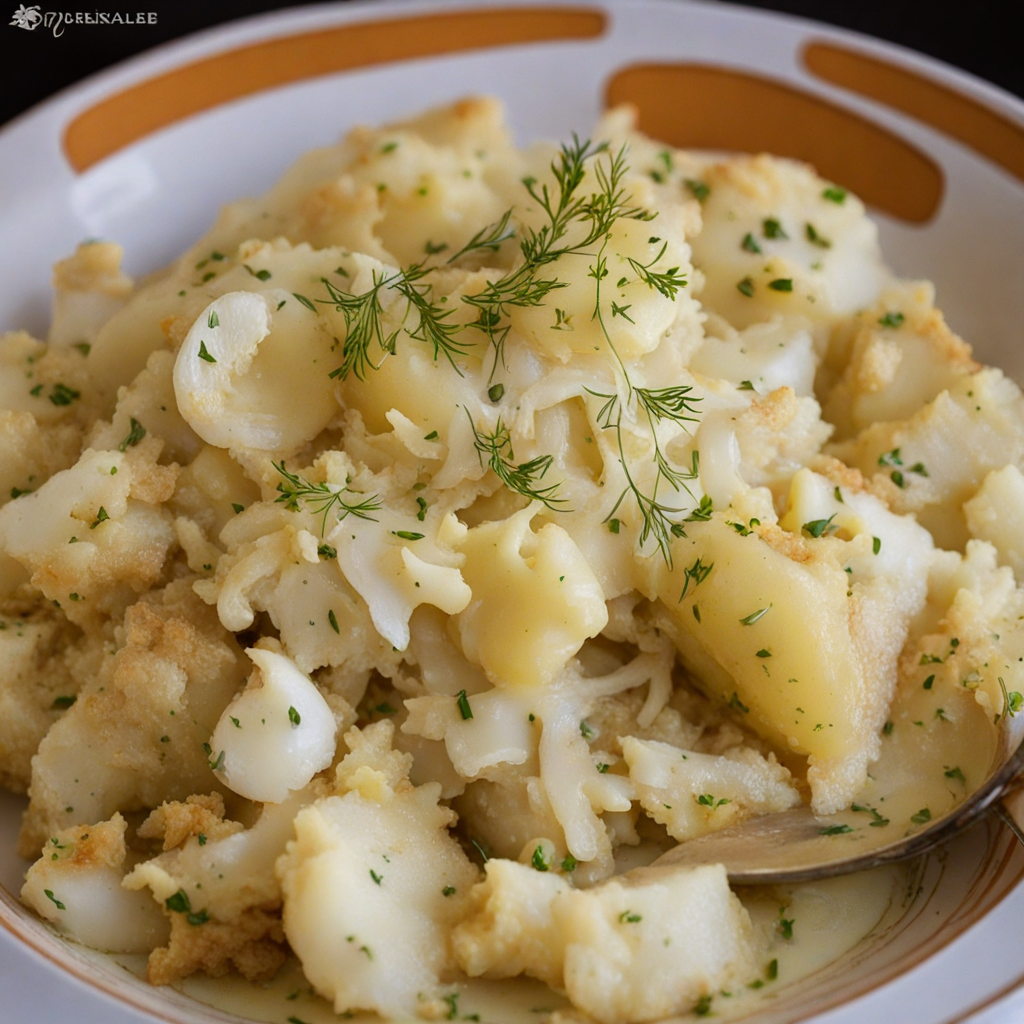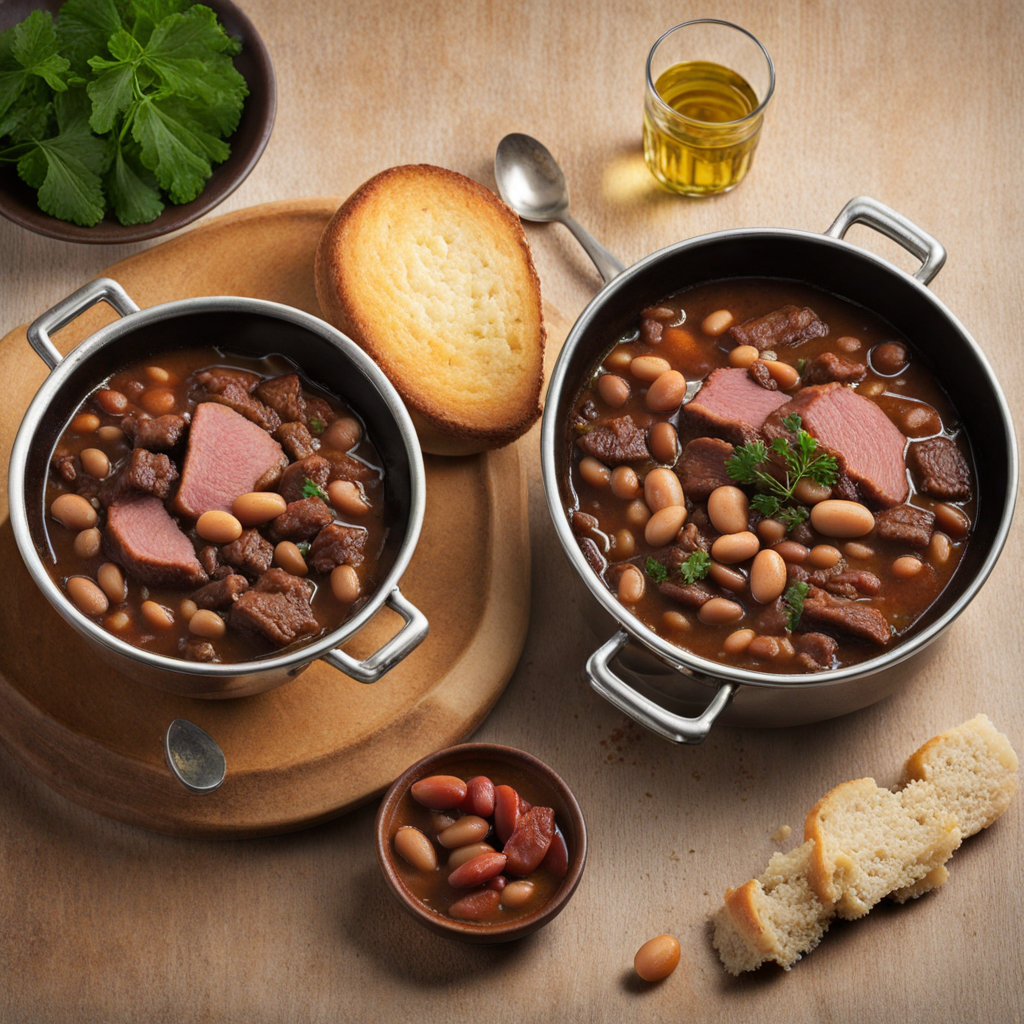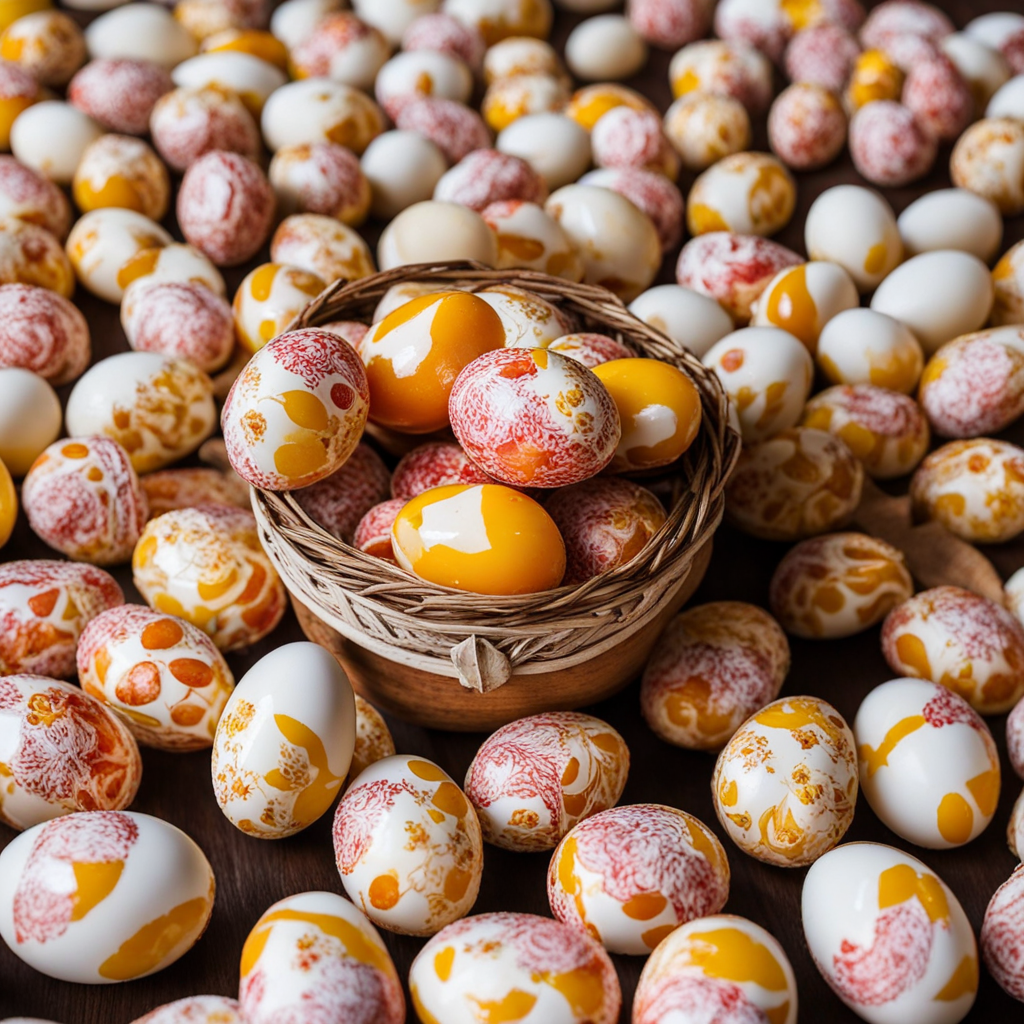Amêijoas à Bulhão Pato
Amêijoas à Bulhão Pato is a traditional Portuguese dish that captivates the palate with its simple yet vibrant flavors. This delightful preparation features fresh clams, typically sourced from the coastal waters of Portugal, which are known for their briny sweetness. The clams are steamed to perfection, allowing them to open up and release their natural juices, which are then infused with a medley of garlic, olive oil, and fresh cilantro. The dish is named after the 19th-century poet Bulhão Pato, reflecting the deep cultural roots of this culinary masterpiece, where every ingredient plays a role in celebrating the essence of Portuguese cuisine. One of the defining characteristics of Amêijoas à Bulhão Pato is its aromatic garlic-infused broth, which envelops the clams and enhances their natural flavors. The use of high-quality extra virgin olive oil not only adds richness but also serves as a base for the aromatic garlic, which is sautéed until fragrant. Fresh cilantro brings a burst of herbaceous brightness, balancing the dish's savory notes. With each bite, the tender clams create a delightful contrast against the garlicky oil, making it a dish that is both comforting and refreshing. This dish is often served as an appetizer or a tapa, perfect for sharing among friends and family. It is commonly accompanied by crusty bread, ideal for soaking up the luscious broth, allowing diners to savor every last drop. The experience of enjoying Amêijoas à Bulhão Pato is not just about the food; it’s about the communal atmosphere and the joy of tasting the sea through this beloved Portuguese specialty.
How It Became This Dish
Amêijoas à Bulhão Pato: A Culinary Journey Through Portuguese Culture Origins Amêijoas à Bulhão Pato, or "Clams Bulhão Pato," is a beloved dish in Portuguese cuisine, hailing from the coastal regions of Portugal, particularly the Lisbon area and the Algarve. The dish is named after the 19th-century Portuguese poet Bulhão Pato, known for his lyrical works and connection to the local culture. While the exact origins of the dish are somewhat murky—like the brackish waters from which the clams are harvested—its roots can be traced back to the country’s long-standing relationship with the sea and its bounty. Clams have been a staple in Portuguese diets for centuries, as evidenced by historical texts and archaeological findings. Portugal's vast coastline, which stretches over 1,700 kilometers, has endowed its people with an abundance of seafood. The tradition of gathering shellfish dates back to prehistoric times, as coastal communities relied heavily on marine resources for sustenance. Clams, particularly the variety known as "amêijoas," have held a special place in Portuguese culture, featured in various regional dishes. Cultural Significance The significance of Amêijoas à Bulhão Pato extends beyond mere sustenance; it encapsulates the essence of Portuguese life. The dish is emblematic of the "marisqueira" experience, a popular dining tradition in coastal towns where seafood is served in a convivial atmosphere. Restaurants specializing in shellfish often highlight the freshness and quality of their offerings, with Amêijoas à Bulhão Pato as a signature item. Culturally, the dish reflects the Portuguese love for simplicity and quality in cooking. The recipe typically consists of clams cooked with garlic, olive oil, fresh coriander (cilantro), and a splash of white wine or broth—ingredients that are readily available and emphasize the natural flavors of the seafood. This simplicity is a hallmark of Portuguese cuisine, which often relies on a few high-quality ingredients rather than complex preparations. Development Over Time As with many traditional dishes, Amêijoas à Bulhão Pato has evolved over time, adapting to changes in culinary trends and the availability of ingredients. The core components—clams, garlic, and olive oil—have remained constant, but variations have emerged that reflect regional influences and personal preferences. In its early iterations, the dish would have been prepared by fishermen’s families along the coast, often cooked outdoors over an open flame. As urbanization progressed and culinary techniques became more refined, Amêijoas à Bulhão Pato made its way into restaurants, becoming a popular choice among locals and tourists alike. The introduction of higher-quality olive oils and the growing popularity of fresh herbs in the late 20th century further elevated the dish. Chefs began to experiment with additional flavors, such as lemon zest or piri-piri (a type of chili pepper), while still honoring the dish's traditional roots. This blend of innovation and tradition reflects a broader trend in Portuguese cuisine, which has seen a revival in recent decades as chefs seek to highlight the country’s rich culinary heritage. The Dish Today Today, Amêijoas à Bulhão Pato is a quintessential part of the Portuguese culinary landscape. It is often served as an appetizer, enjoyed with crusty bread to soak up the fragrant broth, or as a main course accompanied by rice or pasta. The dish is not just a meal; it is an experience that invites diners to appreciate the coastal lifestyle and the rich maritime culture of Portugal. In recent years, the dish has gained international recognition, with Portuguese restaurants abroad showcasing it as a hallmark of their culinary offerings. This global exposure has introduced Amêijoas à Bulhão Pato to new palates, allowing the dish to transcend regional boundaries while maintaining its cultural significance. A Culinary Representation of Portuguese Identity Amêijoas à Bulhão Pato serves as a culinary representation of Portuguese identity, reflecting the nation’s deep connection to the sea and its emphasis on community and hospitality. The act of sharing a plate of clams among friends and family is a celebration of togetherness, a value deeply ingrained in Portuguese culture. Festivals, feasts, and family gatherings often feature seafood, and Amêijoas à Bulhão Pato is frequently at the center of these culinary celebrations. Furthermore, the dish symbolizes the sustainable practices that have characterized Portuguese fishing communities for generations. The harvesting of clams is often done using traditional methods that respect the marine ecosystem, reinforcing a commitment to preserving the natural environment that has supported Portuguese livelihoods for centuries. Conclusion In conclusion, Amêijoas à Bulhão Pato is more than just a dish; it is a narrative woven into the fabric of Portuguese culture. From its humble origins along the coast to its status as a celebrated culinary delight, the dish encapsulates the essence of Portugal’s maritime heritage, its focus on quality ingredients, and its love for community and tradition. As Portugal continues to evolve, so too will Amêijoas à Bulhão Pato, forever remaining a beloved emblem of the nation's rich culinary tapestry. Whether enjoyed in a seaside restaurant or in the comfort of home, this dish invites all who partake to savor not only its flavors but also the history and culture that it represents.
You may like
Discover local flavors from Portugal


